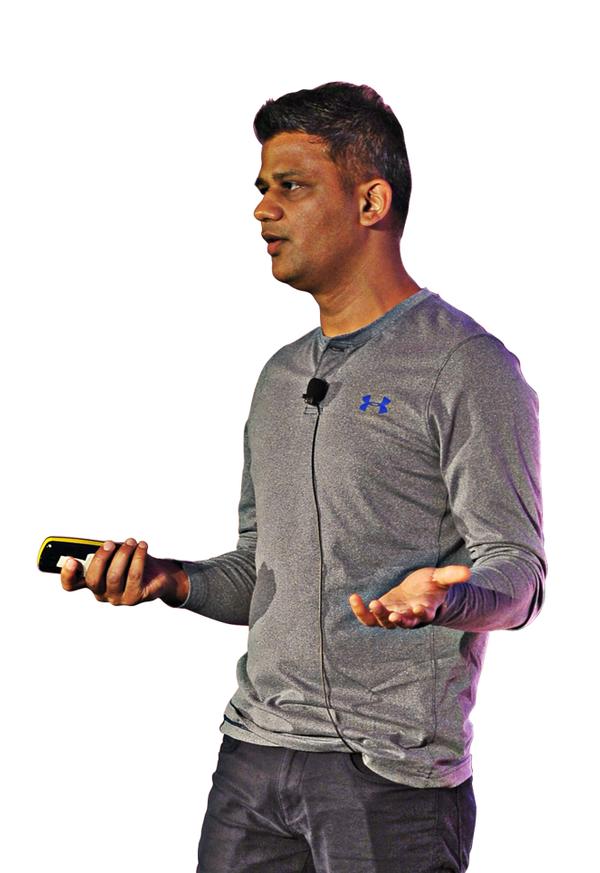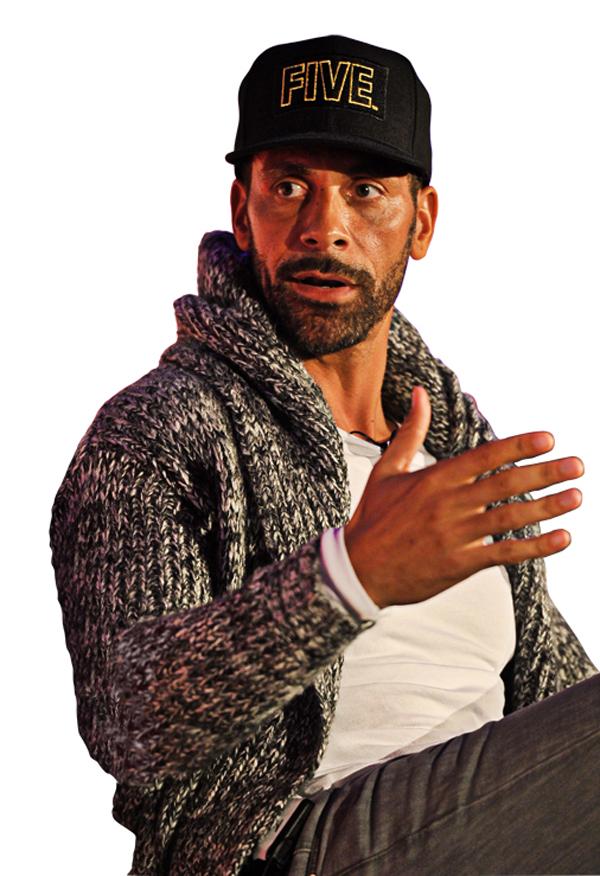Gone are the days of overtly “selling stuff”. That was the message from Sid Jatia, Under Armour’s vice president of digital, at the recent Millennial 20/20 Summit – an event that looked at all aspects of doing business with the younger generations. Of course businesses will still want to drive sales of their products and services – but the process that leads to that point will be increasingly more experiential and less transactional.
To grow your brand in today’s marketplace, you have to focus on three key, interlinked things, Jatia said: engagement and conversation come first – and only after those have been established should you begin to factor in commerce.
Context is god
Indeed, engagement is so key that it actually surpasses the product itself. “Don’t over-indulge the product,” urged Jatia. “Think about the experience around it, because ultimately the experience will become your product.”
Marcello Fabiano, head of sport at The Social Chain, agreed. You might have a great new app, he said, but in fact it isn’t about the app itself but about how you sell it: “Content might be king, but context is god. It’s all about the experience you wrap around it.”
He continued: “For example, we ran a campaign for an app called TippyTap. Focusing on the positives – how great it was – wouldn’t have made it stand out from the crowd. So instead we focused on the negatives: ‘This app is addictive. It will ruin your life. Don’t download it if you’re doing exams – you will fail.’
“It received over 100,000 downloads in the first eight hours, 9,281 mentions in the first five hours, trended at number one on Twitter for two hours, and has now had over 2 million downloads.”
A softer sell
Conversations with the consumer stem from that sort of engagement – and once the conversation is flowing, commerce can finally be worked in. “We spent US$800m acquiring MyFitnessPal, MapMyFitness and Endomondo and their 165 million users,” continued Under Armour’s Jatia. “People asked us how we’d get a return on that investment, but it comes in many forms.
“It’s brought more of an equal gender balance to our customer profile, for example. That in itself is very valuable to the business. But we also make every moment on our apps ‘shoppable’. For example, photos of people working out in Under Armour apparel are tagged, so anyone looking at them can click and launch through to a commerce area.”
Other presenters agreed with Jatia’s ‘engagement first, sell later’ approach. “Our measure for success is a growth in engagement and participation,” said Fabiano. “It’s only some way down the line that you can get the brand involved.”
“It’s almost impossible to guess at the ROI of a social media initiative,” added Vice’s Luke Barnes. “You need to be able to take a risk, try things out, have the freedom to be creative.
“Ultimately, even if it goes wrong, provided you have a good relationship with your customers they’ll appreciate that you tried and will forgive you. Social media offers you the chance to push boundaries.”
Show not tell
Another area of consensus was the idea that visual elements – photos, and in particular video – are key to delivering relevant, engaging context and content to a Millennial market. Not least because, as Sky Sports’ Yath Gangakumaran observed, “video content is far more shareable than text” – and being shareable is the social currency of the day.
“We’ve recently launched on Snapchat,” said Arsenal FC’s senior business strategy manager James Murray. “We spoke to our young fans and they couldn’t believe we weren’t there. It’s where they are and they expected us to be there too.”
For other brands, the use of such social media channels might be more surprising – but it doesn’t mean it isn’t right, as Wimbledon’s head of digital and content Alex Willis explained: “Wimbledon is very traditional, but there’s a huge opportunity to use social media to add a bit of magic for those who don’t have the chance to attend in person. It’s immensely powerful.
“During the two weeks of Wimbledon, we very deliberately use social media to bring people content they won’t see anywhere else, or content that we’ll be the first to show them. One great example was the moment last year when David Beckham – sitting among the crowd of spectators – caught a ball that had been mis-hit by Jamie Murray.”
“Short-form video content is what people want,” agreed Arsenal’s James Murray – not to be confused with the tennis-playing Jamie.
“They want to see things live, in real time. The challenge for brands is therefore to create compelling propositions around which people can – and want to – create and upload video content.”
Live action
And it’s the live, breaking news nature of the videos that’s key – especially for things like sport – added James Heneghan, commercial manager for video sharing platform Grabyo. “It doesn’t really matter what the content is, or how good the quality. The key is getting it out there quickly, as the story is breaking. The quicker you get it out, the better.”
All of which means that really anyone can provide the content. “Competition is no longer just the likes of the BBC,” said Gangakumaran. “It isn’t even the social media channels, such as Twitter, which are starting to secure broadcasting rights to major sporting events. Competition can be a 15-year-old down the street on his smartphone.
“However, you can also see these people as partners rather than competitors. For example, Sky Sports collaborates with Dude Perfect – a king of sport on YouTube with a huge number of followers.”
“If you can get a good following on social media, that makes you a media channel in your own right,” agreed former England footballer Rio Ferdinand in his keynote. “Does that make you more powerful than the traditional channels? That’s a question I’ve been asking myself, but certainly I believe that brands looking to endorse or sponsor players will, going forward, be looking for those with a big social media following as much as those with great sporting skills.”
Short and to the point
But content does still have to be relevant as well as timely – in tune both with your users and your own brand.
“We have fan zones on SportLobster,” said the sporting social media forum’s co-founder and its CEO, Andy Meikle. “It offers people an uninterrupted experience of what they’re really interested in, with other fans they can interact with and no other content – politics and so on – appearing in the feed.”
And it has to be attention-grabbing too: “Keep it short and snappy – 30-45 seconds is best – and make sure you post regularly,” said Heneghan. “And use square vertical format: this has the best standout and is also watched for longer than other formats.”

























































